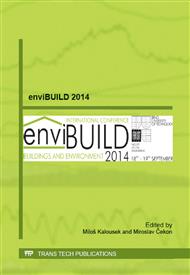p.11
p.15
p.19
p.23
p.27
p.31
p.35
p.39
p.43
Study of the Mechanical Behavior against Horizontal Forces of Self-Supporting Facades
Abstract:
The brick façades are one of the most used façades in the current architecture. This typology is used during centuries, but still relevant today. The conventional way to build a brick façade is supporting the outer sheet on the slabs of the building. In buildings with these conventional façades have appeared stability, insulation and sealing problems.The self-supporting façade appears to solve these problems easily. This type of façade can solve more easily thermal bridges in buildings, which is an optimization of energy consumption. To resist horizontal forces façades need anchors between the two sheets or between the outer sheet and the structure. The current standards in Spain do not define the arrangement of the anchorages between the exterior sheet and the inner sheet of the enclosure. This paper studies the influence of the inner sheet in self-supporting façades. The transmission of horizontal forces between the two sheets of the façade is analyzed in detail, in order to check whether the inner sheet assists in the stability of the outer sheet. Different models of façade have been simulated to compare their results using the finite element method.
Info:
Periodical:
Pages:
27-30
Citation:
Online since:
October 2014
Authors:
Keywords:
Price:
Сopyright:
© 2014 Trans Tech Publications Ltd. All Rights Reserved
Share:
Citation:


